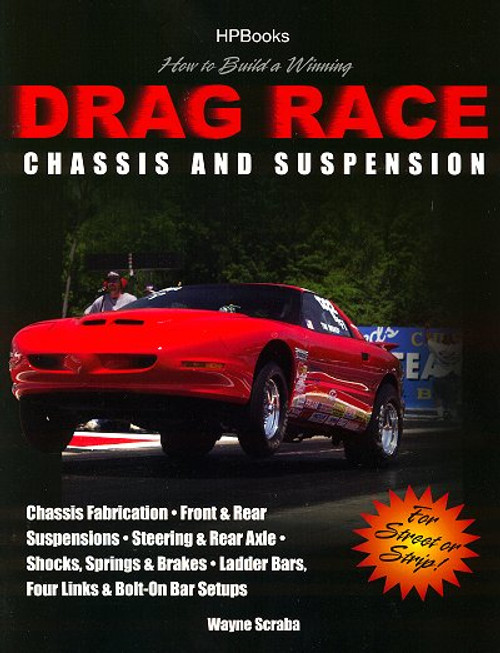One thing that is obvious when browsing through the latest rodding magazines, is that there's no shortage of options regarding suspensions for your rodding project. Various advertisers feature their latest fancy complete independent set-ups, while car features cover a combination of both the latest and greatest vs. traditional styles of suspensions. Which ones are the best? How hard are they to install, and how much is it going to cost? In The Complete Builder?s Guide to Hot Rod Chassis and Suspension, hot rodding author Jeff Tann covers everything enthusiasts need to know about designing and building their new chassis and suspension system. The book thoroughly explores both factory and aftermarket frames, modified factory solid-axle suspensions, and aftermarket independent front and rear suspension setups.
Book Excerpt: The Complete Builder's Guide to Hot Rod Chassis and Suspension EARLY HOT-ROD TRANSMISSION SELECTIONS
No matter what design a reader may be considering for his own car, The Complete Builder's Guide to Hot Rod Chassis and Suspension delivers a wealth of information on the pros and cons of all systems available. Whether you end up building a traditional or retro rod and stick with a conventional system, go high-tech and get the latest and greatest, or decide on a hybrid somewhere in between, this book will guide you through the process of choosing, installing, and enjoying your hot rod's suspension. Subject: Suspensions: Hot Rods: How to build chassis and suspension systems for hot rods. ISBN-10: 1934709182 | ISBN-13: 9781934709184 | CarTech SA185
Book Excerpt: The Complete Builder's Guide to Hot Rod Chassis and Suspension EARLY HOT-ROD TRANSMISSION SELECTIONS
Most of the early hot rods used upgraded Ford parts, such as later-model (1936 through 1948) differentials and dropped-I-beam axles. The early Ford differentials used a torque tube to connect the differential to the transmission, and that was fine if a flathead engine was powering the car. The torque tubes from the later-model cars had to be shortened when they were used in early-model hot rods. The early differentials weren't strong, but hot rodders quickly found out that the transmission was the weak link in these early machines. Even a strong-running flathead could strip the gears in an early transmission. The most commonly used transmission was a 1939 Ford unit, because it was stronger than the previous transmissions, and the stick shifter is built into the transmission. In 1940, Ford changed to a column-shifted transmission, but it wasn't stronger than the 1939 tranny. The 1939 Ford transmission was widely used and seemed to work with a mildly-built flathead engine for street use and dry-lakes racing, but it didn't stand up to drag racing when a car was running sticky tires. By the mid 1950s, the powerful new Buick, Olds, Cadillac, and Chrysler V-8 engines were being installed in the hot rods, and the early Ford transmissions simply weren't built to handle the increased torque and horsepower. One good stab of the throttle, and the early transmissions would strip the gears right off the input shaft and cluster gear. The Ford transmissions had straight-cut gears that weren't very strong, so some rodders modified the transmissions with stronger Lincoln-Zephyr diagonally cut gears. When the Zephyr-geared transmissions were used, the power could be transferred through the transmission more effectively, but then the early Ford differential gears could be stripped under hard acceleration.
No matter what design a reader may be considering for his own car, The Complete Builder's Guide to Hot Rod Chassis and Suspension delivers a wealth of information on the pros and cons of all systems available. Whether you end up building a traditional or retro rod and stick with a conventional system, go high-tech and get the latest and greatest, or decide on a hybrid somewhere in between, this book will guide you through the process of choosing, installing, and enjoying your hot rod's suspension. Subject: Suspensions: Hot Rods: How to build chassis and suspension systems for hot rods. ISBN-10: 1934709182 | ISBN-13: 9781934709184 | CarTech SA185
TABLE of CONTENTS:
- Preface
- Introduction
- Hot Rod Chassis Modifications
- Solid Front Axle Suspensions
- Independent Front Suspensions
- Solid Rear Axle Suspensions
- Independent Rear Axle Suspensions
- Source Guide










